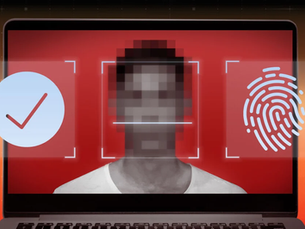top of page
414-530-5214
All Posts


PROTECTION AGAINST TYRANNY BY RETAINING ALL CONSTITUTIONAL RIGHTS AGAINST THE FEDERAL GOVERNMENT’S UNJUSTIFIED KILLING OF CITIZENS
As I read the headlines about federal agents killing American citizens who were not threatening the federal agents, Eyewitnesses say Renee Good posed ‘no threat’ to ICE agents, https://www.mprnews.org/story/2026/01/07/shooting-south-minneapolis-ice-agents-federal-operation and further recall that this is not the first time federal agents have shot and injured or killed citizens, How Many People Have Been Shot in ICE Raids?, https://www.thetrace.org/2025/12/immigration-ice-s
Paul Ksicinski
6 minutes ago2 min read


POLICE CAN SEARCH YOU WITHOUT EVER TOUCHING YOU IN OUR ERA OF MASS SURVIELLANCE
There was of course no way of knowing whether you were being watched at any given moment. - George Orwell, 1984 The Fourth Amendment guarantees ''[t]he right of the people to be secure in their persons, houses, papers, and effects, against unreasonable searches and seizures.'' This guarantee is critical to the right of people to be free. “Uncontrolled search and seizure is one of the first and most effective weapons in the arsenal of every arbitrary government” Brinegar v.
Paul Ksicinski
Dec 28, 20256 min read


CHRISTMAS REMINDS US OF RELIGIOUS ARGUMENTS FOR SEPARATION OF CHURCH AND STATE
During the Christmas season (interestingly Protestant forces in Boston actually outlawed Christmas from 1659 to 1681 since it was a man-made holiday, When Americans banned Christmas, https://theweek.com/articles/479313/when-americans-banned-christmas ) there are always arguments about the mixing of religion and politics or the state. Many Fundamentalist Christians (forgetting 1 Corinthians 5 which forbids the use of state laws to force belief leaving outsiders to God's judg
Paul Ksicinski
Dec 17, 20255 min read


AGE VERIFICATION IS CENSORSHIP AND INVADES PRIVACY
Photo from PC Magazine Age verification mandates’ potential to infringe on individuals’ privacy and free expression has fueled criticism and litigation in the United States. Previously, the U.S. Supreme Court found online age verification laws to infringe upon First Amendment rights. In the recent Free Speech Coalition v. Paxton, 606 U.S. ___ (2025) case, however, the court departed from precedent with a six-three decision to uphold Texas H.B. 1181, which mandates age verifi
Paul Ksicinski
Dec 16, 20254 min read


WEARING A HAT BACKWARDS AND PROTECTION AGAINST STUPID LAWS
Say the legislature passed a law which made it a felony to wear a baseball cap backwards. There would be legislative history that indicates the legislators passed this law because of the problem of gangs in society. The legislative history further indicates that gangs are dangerous. The legislature heard testimony that gang members display what gang they are affiliated with by the clothes they wear. Moreover, citizen injuries have resulted when gang members wore their hats ba
Paul Ksicinski
Nov 13, 20256 min read


A VETERAN’S SERVICE SHOULD INFLUENCE HOW THEY ARE TREATED IN THE CRIMINAL JUSTICE SYSTEM
U.S. Marines pray over a fallen comrade after he died from wounds suffered in fighting in Fallujah, Iraq, April 8, 2004. AP Photo/Murad Sezer, File On March 20, 2003, a U.S.-led military coalition invaded Iraq, toppling the government of Saddam Hussein before a fierce insurgency rose up to oppose Western forces. As the fighting unfolded over eight years, more than a million U.S. service members deployed to the region, and many returned with complex physical and mental wounds
Paul Ksicinski
Nov 11, 20258 min read


THE LIE OF A MIGRANT CRIME WAVE TO JUSTIFY TRUMP OR ICE ACTIONS
When Donald Trump speaks, you can expect to hear him talk about “migrant crime,” a category he has coined and defined as a terrifying binge of criminal activity committed by undocumented immigrants spreading across the country. A lie repeated often enough starts to be believed as true. That’s why a Pew poll, found 57% of Americans said that a large number of migrants seeking to enter the country leads to more crime. Republicans (85%) overwhelmingly say the migrant surge lea
Paul Ksicinski
Nov 9, 20252 min read


SECOND AMENDMENT, GUNS, AND FELON IN POSSESSION OF A FIREARM AND PARDONS
The basis for the Second Amendment is the right of we the people to act in self-defense. There is a historical basis to assert that individual right to self-defense as the basis of the Second Amendment. District of Columbia v. Heller , 554 U.S. 570, 128 S.Ct. 2783, 2805-06, 2811 (2008). See generally David B. Kopel, The Second Amendment in the Nineteenth Century , 1998 B.Y.U. L. REV. 1359.1 WILLIAM BLACKSTONE, COMMENTARIES ON THE LAWS OF ENGLAND Appendix 310 (St. George
Paul Ksicinski
Nov 8, 202513 min read


LOSING PRIVACY TO FLOCK CAMERAS OR AUTOMATED LICENSE PLATE READERS
Imagine you are going to see an old high school friend you have not seen in ages. You drive across a few states and are in a strange town. Arriving later in the evening, you have to circle back a few times and turn around because you make some wrong turns. You are weaving down the road a little as you try to read google maps on your phone. Suddenly there are squad lights behind you. You pull over. A cop opens her squad door with her gun drawn. The officer tells you to g
Paul Ksicinski
Nov 6, 20254 min read


FLASHING HIGH BEAM HEADLIGHTS AT ANOTHER CAR TO SIGNAL SPEED TRAP AHEAD IS NOT ILLEGAL UNDER THE FIRST AND FOURTH AMENDMENT
The other day, as I was driving along the road and a car flashed its lights at me and sure enough about two blocks further there was a cop clocking for speeders. Luckily, by flashing his lights, the other car told me to check my speed because a cop was clocking on-coming cars. Of course, in case you were wondering, I was not speeding anyway. However, I wondered about the motorist flashing his lights. I wondered if by flipping her lights on and off like that, the motorist
Paul Ksicinski
Nov 5, 20256 min read


CRUDE AND FOOLISH BUT NOT CRIMINAL: POLICE CANNOT ARREST YOU IF YOU GIVE THEM “THE BIRD” OR FLIP THEM OFF
It is my opinion that police officers should be paid more and receive more training. "There are around 18,000 police agencies in the US, but with no national standards on training, procedures and timescales vary across the country. On average, US officers spend around 21 weeks training before they are qualified to go on patrol. That is far less than in most other developed countries, according to a report by the Institute for Criminal Justice Training Reform (ICJTR). Also, m
Paul Ksicinski
Nov 3, 20256 min read


HAVING POLICE SMILE FOR THE CAMERA: YOUR RIGHT TO PHOTOGRAPH AND VIDEOTAPE POLICE
The First Amendment protects the rights of private citizens to record police officers during the public discharge of their duties. “There is no question that speech critical of the exercise of the State’s power lies at the very center of the First Amendment.” Gentile v. State Bar of Nev., 501 U.S. 1030, 1034 (1991). The reach of the First Amendment’s protection extends beyond the right to gather such information – it also prohibits government officials from “punish[ing] the
Paul Ksicinski
Nov 2, 20254 min read


Paul Ksicinski
Nov 1, 20250 min read


IT IS 3AM AND THE COPS ARE BANGING ON THE DOOR OF MY HOUSE. WHAT DO I DO?
This morning at 3 AM I received a frantic phone call stating, “You gotta help me man…the cops are pounding on my door….what should I do?” If you are ever in this situation, here is what I suggest you do. BE CALM. TO THE EXTENT POSSIBLE, DO NOT ARGUE OR BE A SMART ASS WITH THE COPS. While some cops are professional and will deal with that response by you professionally, some will not and simply arrest you on obstructing/resisting charges (or do something worse) and execute
Paul Ksicinski
Nov 1, 20253 min read


CHALLENGING THE CONSTITUTIONALITY OF WISCONSIN FELONY MURDER STATUTE
FOX 11 Investigates: Felony murder by Robert Hornacek, FOX 11 News Wed, November 15, 2017 at 8:14 AM https://fox11online.com/news/fox-11-investigates/fox-11-investigates-felony-murder A look at the scene of the shooting in the early morning hours of Sunday, May 21, 2017 outside Jack's Apple Pub in Appleton. (WLUK/Jerry Van Handel) (WLUK) -- Did you know a person could be charged with murder in Wisconsin even if they didn't actually kill anyone? It's called felony murder. Pros
Paul Ksicinski
Oct 31, 20254 min read


Grants Pass v. Johnson: homelessness as a crime
A homeless child plays in the park after receiving free food with her mother and sister, in Riverside Park, Thursday, March 21, 2024, in Grants Pass, Ore. ( AP Photo/Jenny Kane ) On June 28, 2024, the United States Supreme Court issued a 6-3 decision, Justice Neil M. Gorsuch, joined by Chief Justice Roberts and Justices Alito, Barrett, Kavanaugh and Thomas in the majority, in City of Grant’s Pass v. Johnson, -US-, 144 S. Ct. 2202 (2024) holding that a municipality’s enforcem
Paul Ksicinski
Oct 31, 20256 min read


WHEN CAN ICE AGENTS MAKE WARRANTLESS ARRESTS
All persons in the United States have constitutional protections, including the right to remain silent when questioned or arrested by immigration officers. Being stopped by immigration officers or other law enforcement can be frightening, but it’s important to stay calm. During any encounter with law enforcement, Stay calm and don’t run, argue, resist, or fight the officer, even if you believe your rights are being violated or you are being treated unfairly. Keep your hands w
Paul Ksicinski
Oct 30, 20257 min read


ICE DETAINERS, PROBABLE CAUSE HOLDING PEOPLE IN LOCAL JAIL ON ICE DETAINER
The main way for ICE to initiate a transfer from the criminal legal system to the immigration system is to send an ICE detainer request (“ICE detainer”) to a state or local jail. See Dangerous Merger: Corrupting the criminal justice system for immigration enforcement, Immigrant Justice Network, available at http://uncoverthetruth.org/wpcontent/uploads/2010/04/IJN-Dangerous-Merger-Primer.pdf . This ICE detainer provides a notice of ICE’s intent to arrest an individual who i
Paul Ksicinski
Oct 30, 20256 min read


LET IT SNOW, LET IT SNOW BUT DON’T DRIVE A SNOWMOBILE WHILE INTOXICATED
The Wisconsin winter season is coming fast. There are all types of fun things to do in the Wisconsin snow. But know, similar to driving a car, if you operate a snowmobile while intoxicated, you can be arrested for drunk driving. Wis. Stat. § 350.101 (1) (a) reads “No person may engage in the operation of a snowmobile while under the influence of an intoxicant to a degree which renders him or her incapable of safe snowmobile operation.” However, the big difference is drunk
Paul Ksicinski
Oct 29, 20253 min read


BOATWEISER DRINKING AND DRIVING A MOTORBOAT ON WISCONSIN WATERS
“A six-pack of beer and boating go together like a peanut butter and jelly.” John Fetterman , law enforcement director with the National Association of State Boating Law Administrators explained. “There are still a lot of people that think that’s just the way it is.” Since 2003, an average of 124 deaths occurs annually in the U.S. as a result of alcohol-related boating accidents. The Coast Guard has instituted a plan to reduce the overall death toll by five percent by 2016, t
Paul Ksicinski
Oct 29, 20254 min read
bottom of page
